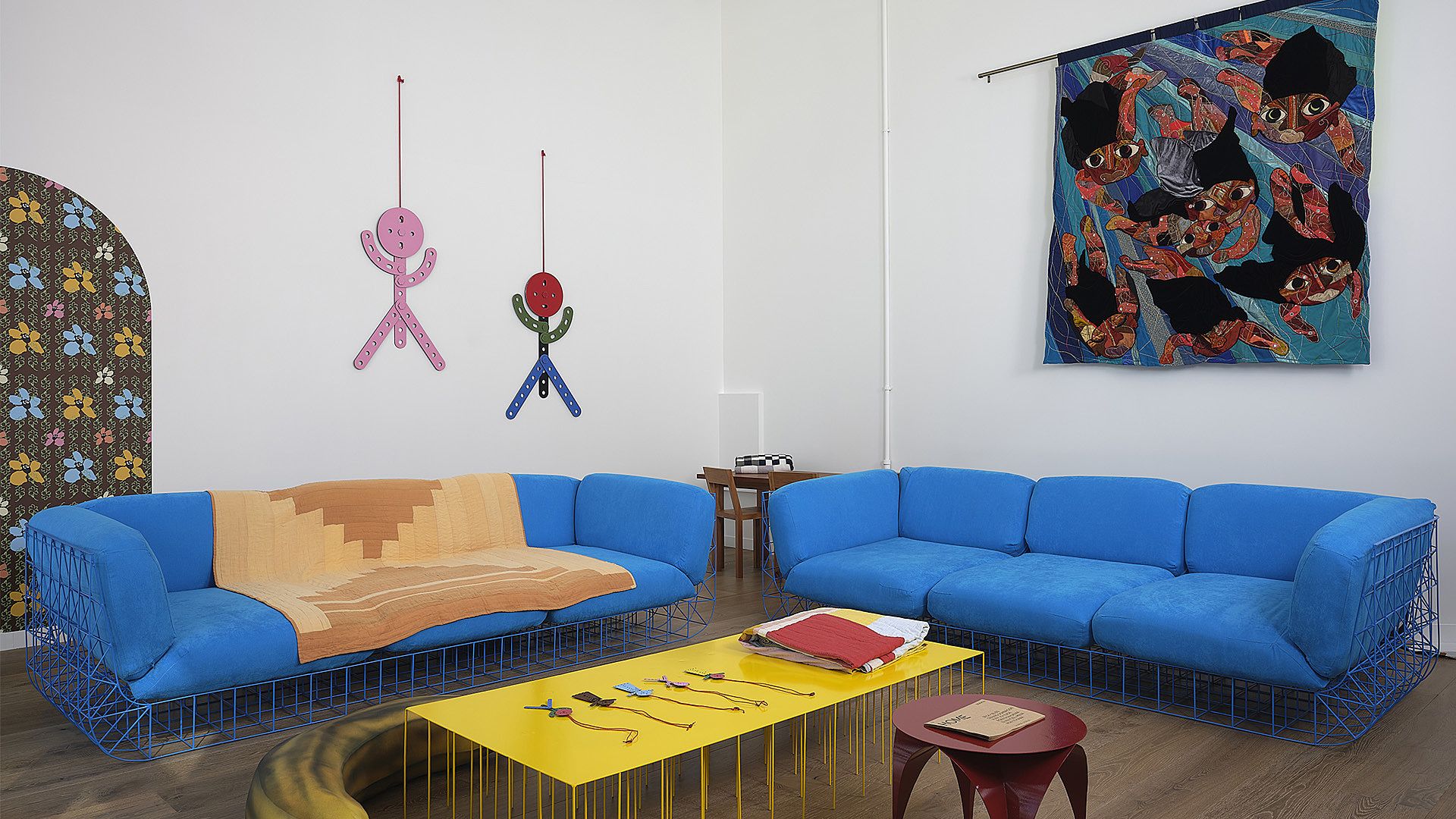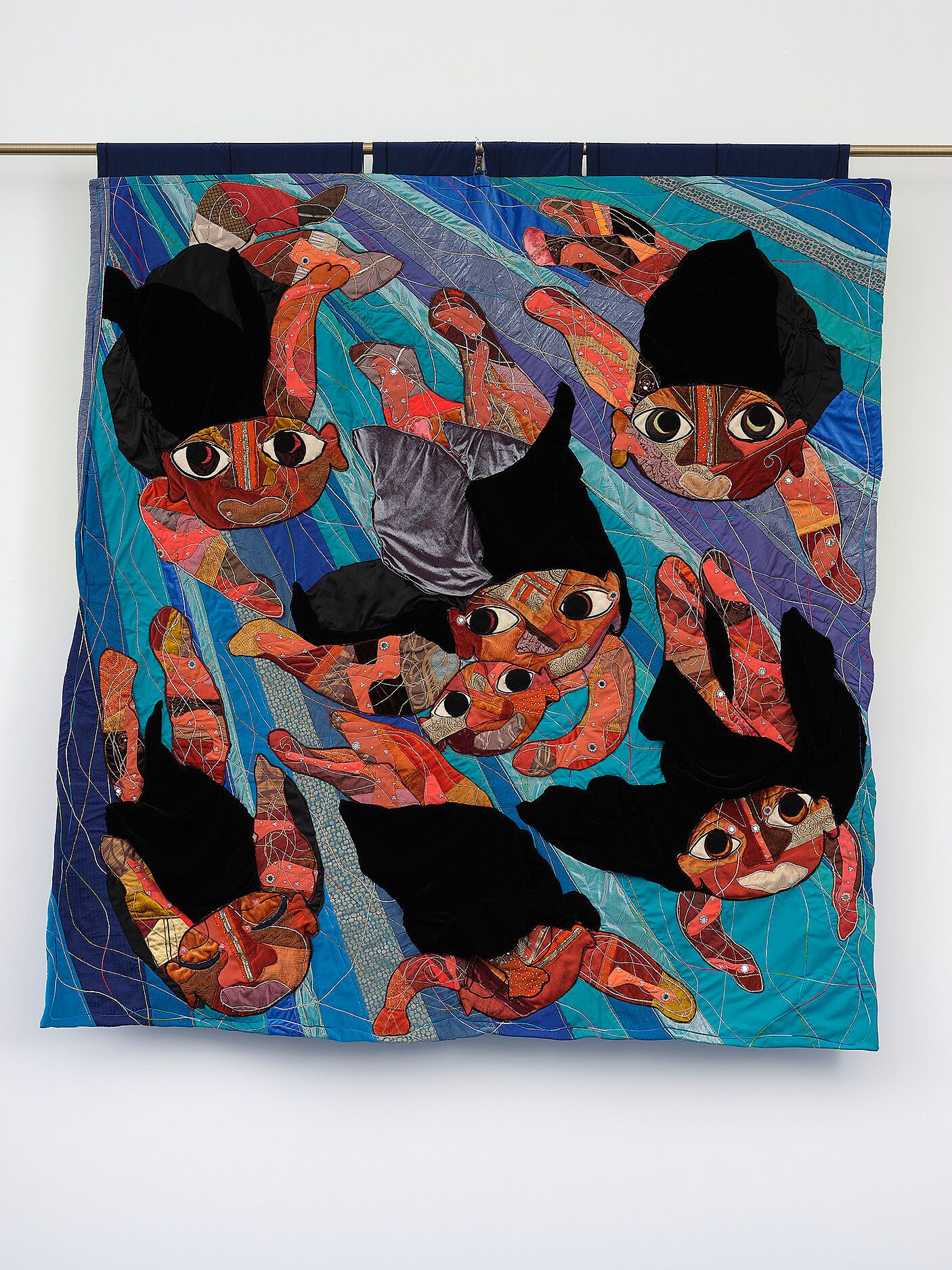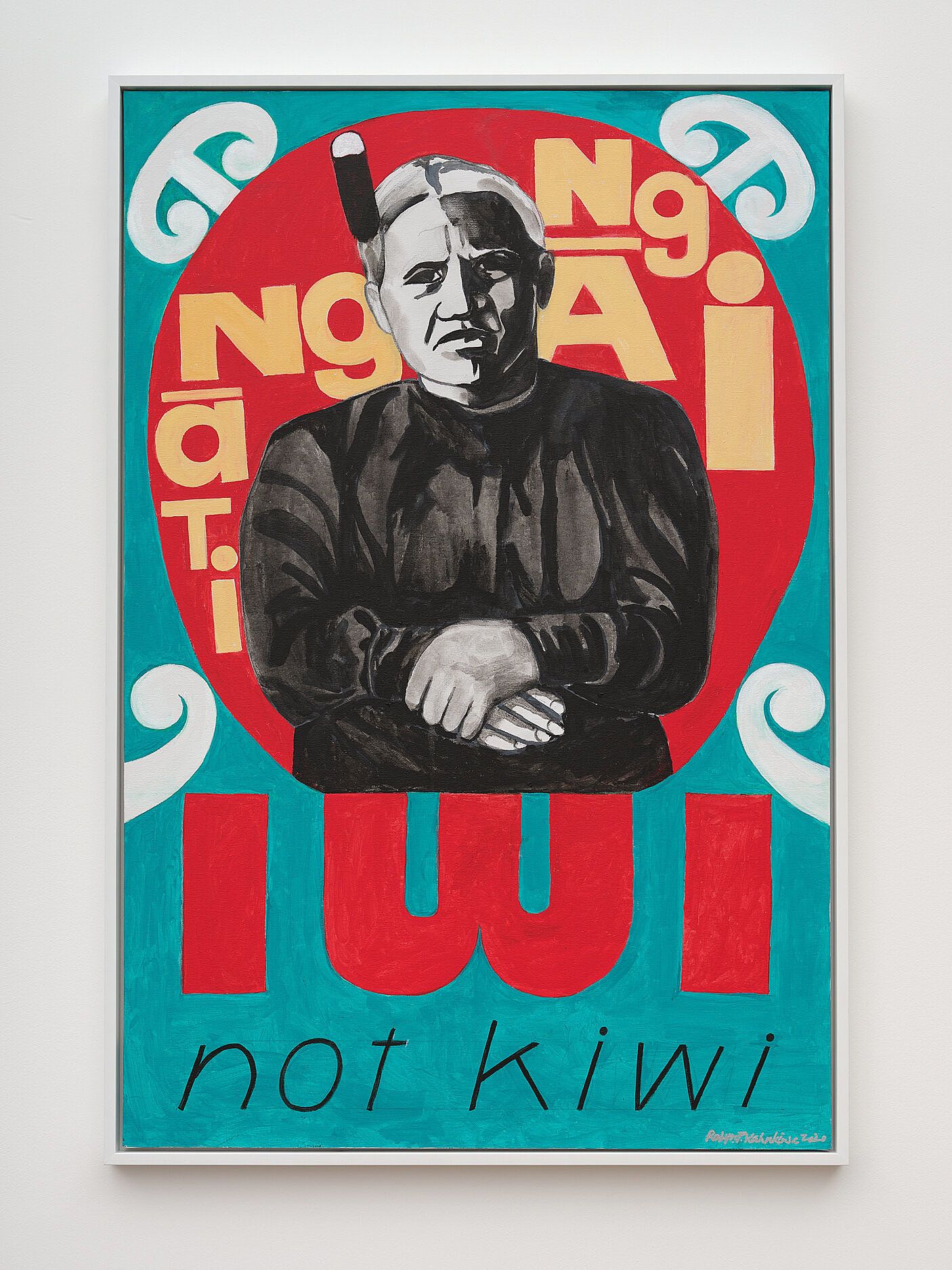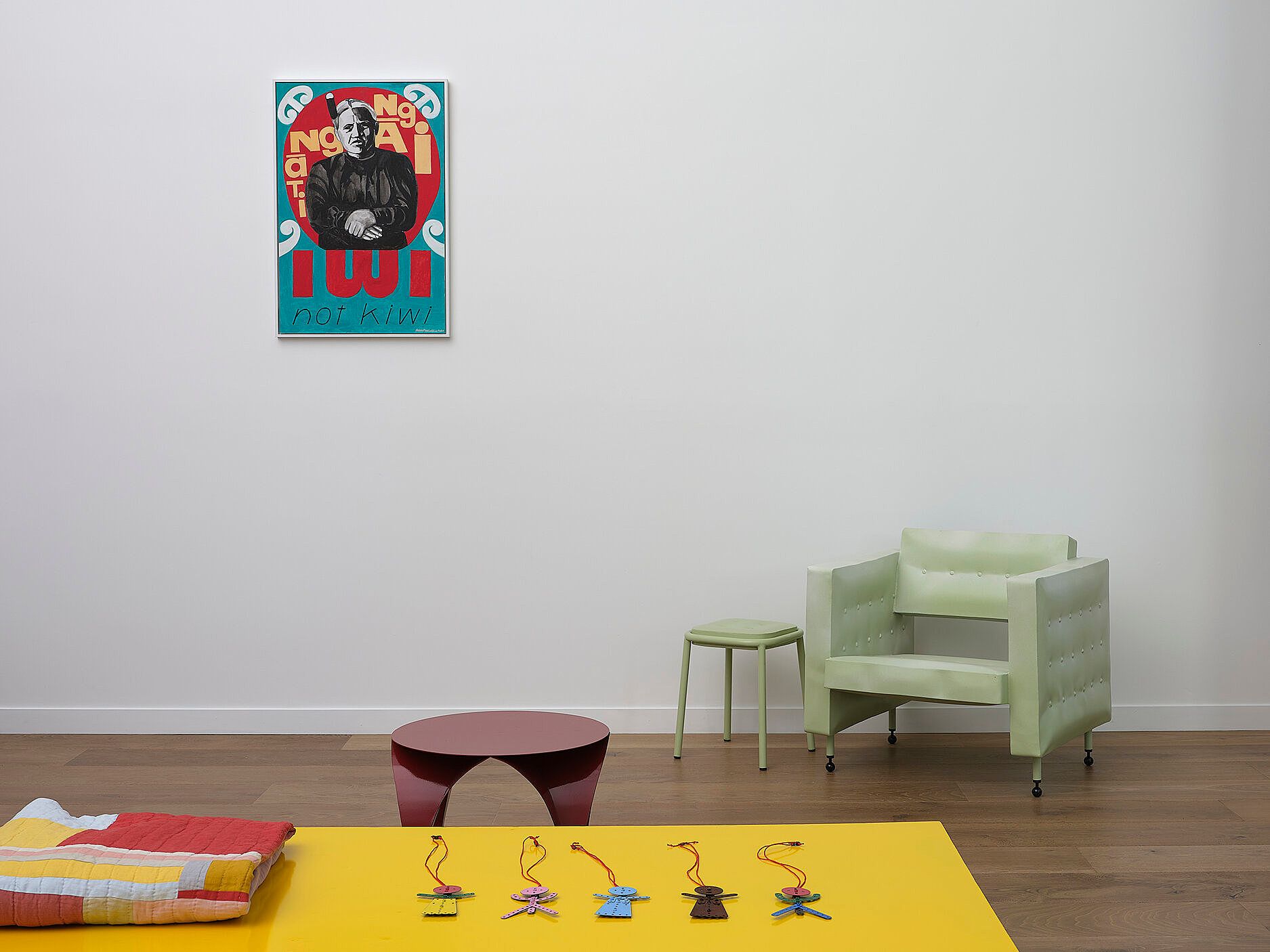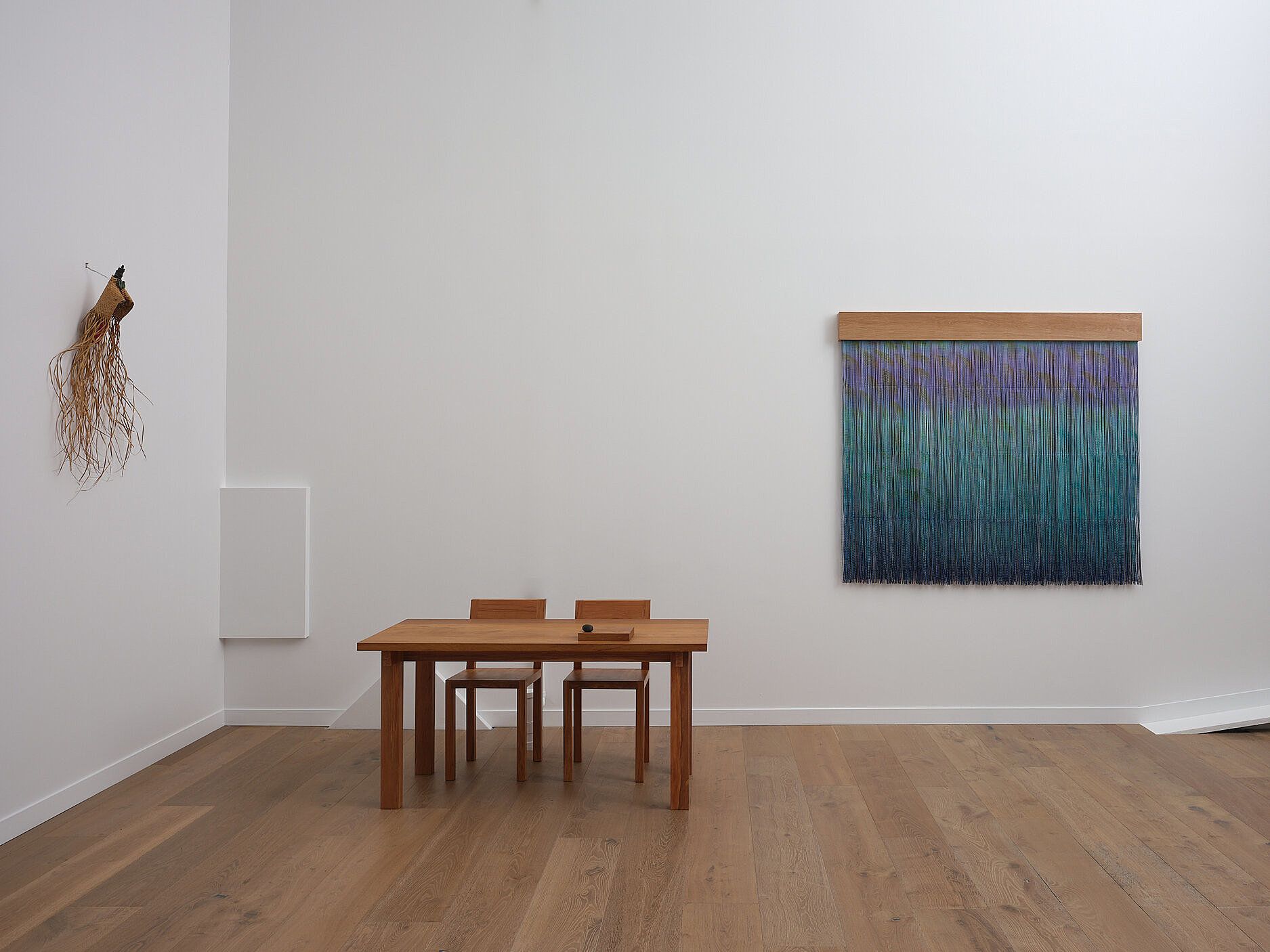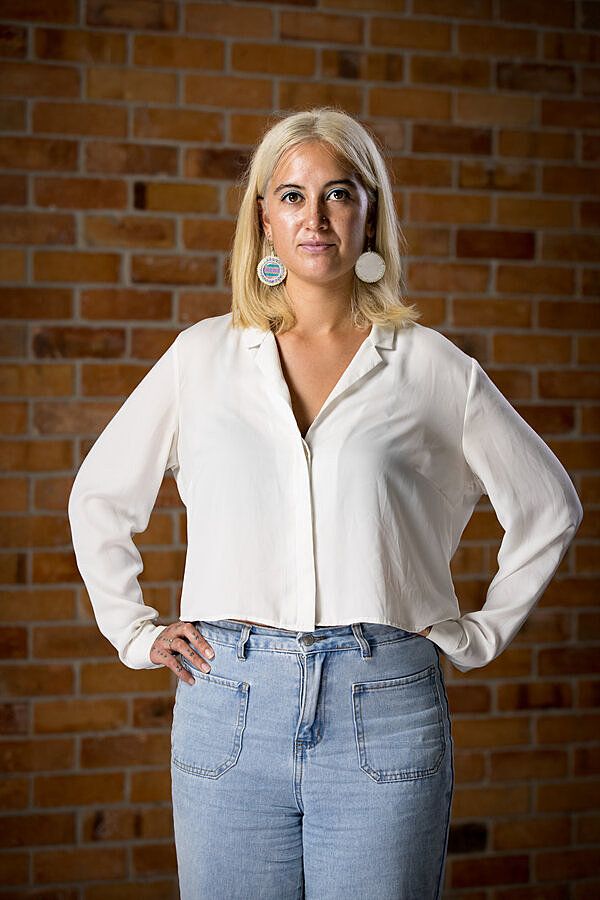Shiny Art With Friends: An Interview With Season
You can whittle the best collectives, galleries, events, whatever, down to a cute art friendship at the core. Faith Wilson with Francis McWhannell and Jade Townsend on the partnership that led to their new gallery Season.
Running late, power walking down Hobson Street. Commercial Bay. I’m looking for a gallery I’ve never been to and I’m standing at the traffic lights wiping sweat off my brow, pulling up my socks, smoothing down my flyaways so I don’t look like such a mess when I walk into the gallery. I see it across the road. Season. Cross the road.
It’s different from what I had imagined. I don’t really know what I had imagined. It’s got high ceilings and faces busy Lower Albert Street. Fancy sign, fancy building. Francis McWhannell and Jade Townsend are sitting quietly, working. I see them through the window. I bustle in. I’m loud. I shout ‘kia ora’. Bounces off walls. Jade, resplendent, hapū, brings me into a warm, long hug. I feel safe, welcome. Put my hand on her belly, feel life emanating. Jade tells me this pregnancy has been easier than her last one “because it had to be”. Laugh, genuinely.
Francis is sitting on one of two giant blue couches. Tapping keys on his laptop. The couches are a sea. A cloud bed. He stands. We hug. Jade sits on the same couch as Francis, and I sit on the opposite. We’re all tucked into our corners. Relax. Look at the walls. The current exhibition is called Home. It’s Season’s second show ever. Listen to the Ron Te Kawa quilt on the wall; let it tell you a story. Sit in quiet communion with Robyn Kahukiwa’s painting that shines from the wall above you. Let Gerard Dombroski’s luxurious, over-the-top beds/clouds/couches absorb your anxieties, hold your bones, as you relax into an hour of kōrero with Jade and Francis.
Francis is sitting on one of two giant blue couches. The couches are a sea. A cloud bed
Home (installation view), Season, Tāmaki Makaurau, 2022. Photo: Samuel Hartnett
I ask them about Season. Origin stories. Want to know how it came to be.
Jade says, “Like most good ideas, it started with a few bottles of wine at dinner, and we started talking passionately about why we love working in the arts and the things that we would like to facilitate more of.” Jade wanted to put on a solo show. Asked Francis if he wanted to join in. “We spent a week talking and fantasising about exhibitions we would like to put on, and realised we had a kaupapa,” says Jade. “Rather than sort of whinge about things that I wanted to see more of, it was time to put together a gallery model that was holistic and fun and playful.” Jade rubs her puku. I study her face and the shape of her nose.
"It was time to put together a gallery model that was holistic and fun and playful”
Francis responds to Jade’s words. “The kōrero with Jade started and evolved naturally, and it pushed me in directions I didn't expect to move in. The gallery has continued to gather momentum of its own accord and find its form – it almost feels outside of our control. In a way, that's really exciting.” Spiralling, tumbling, finding form. Shapes and spaces and surfaces.
“You start exploring the possibility of different spaces, and all of a sudden, something just takes shape. We talked relatively early on about plans and structures and that sort of thing. The conditions of the moment being so precarious and volatile and changeable. It meant we couldn't really plan. We couldn't say, ‘This is what Season will look like’. In fact, the gallery’s name reflects that: we need to be responsive to the conditions around us,” Francis muses.
I am watching them both. They seem like they have known each other for ages. Seem relaxed in each other’s company. Jade has a quiet intensity. Speaks each word with intent. Francis is buoyant. Plucks complete sentences from the air. Gentle voice, but it rings within the walls. They’re a trio (Jade, pēpē, Francis). I want to know more about their friendship.
They’re a trio (Jade, pēpē, Francis). I want to know more about their friendship
“The partnership [with Jade] is overwhelmingly the thing I cherish the most,” says Francis. “It's magical being in this amazing space. It's magical working with these artists. That is the biggest honour. But all of that is predicated on the partnership. For me, everything depends on that. On that bedrock. I say bedrock, and here we are on this so-called ‘reclaimed land’, that's kind of not really land, not really sea.”
“It's truly collaborative,” agrees Jade. “It doesn't feel, act or look like anything I could have created on my own, and it’s the same for Francis. It's this absolute in-between of both of our ideas, and we're learning about ourselves loads.”
“It is a huge amount of trust really. And we know we've got so many good times ahead of us because we've gone into this business at the ‘worst time’. People keep saying it’s the worst time, but we think it’s the best time. We’ve got heaps of making up to do in terms of socialising and having fun, because I've been hapū this whole journey as well. But it's hard to think about when our friendship started, because I can't quite imagine us not being friends now,” Jade continues.
“It's magical being in this amazing space. It's magical working with these artists"
The energy in the room sparkles. I have moved from my couch to the one they’re sitting on. I sit in between them. Feel a cosmic arc bouncing from Jade to Francis and back, over my head. Feel privileged to be sharing space, under this radiant beam.
“I remember my giddy excitement around meeting Jade, which had to do with immediate warmth and openness and generosity, and feeling like, when we met, it was a time I desperately needed those things.”
Francis explains, “The first time I really got to know Jade was at a moment when things were quite rough personally. And the friendship felt very safe and secure. I was able to have deep and open conversations and feel totally seen and not judged. Nurtured, but required to step up as well. And those things remain. There are other ways our relationship has stretched, as relationships inevitably do when you work alongside someone closely, and now I have all of these other things I value about Jade.” Francis nestles into his corner.
The energy in the room sparkles. I have moved from my couch to the one they’re sitting on. I sit in between them. Feel a cosmic arc bouncing from Jade to Francis and back, over my head
Cute. As fuck. You can always whittle the best collectives, galleries, events, whatever, down to a cute art friendship at the core. I want to know more about the ‘gallery model’. I don’t know how to say it without sounding like a dick. The language we use. Our niches. Nests. Is this a dealer gallery?
“Essentially, it’s a commercial gallery,” nods Francis. “We had the space for a fixed period initially, and we mapped out four shows, knowing that there might be some wobbles and warps. And, indeed, there were. Our first show ended up being extended, because of the red-light setting. But we also said we’d let the project evolve on its own. I think it's probably found its form quite clearly now. We know that we're here until at least the end of the year. There’s no immediate desire or reason to chop it off there.”
Jade says, “It's cool that being a commercial dealer gallery is not overt, because the curatorial aspect is the juicy bit for us. Going, ‘Oh my God, imagine if we could get Ron Te Kawa next to Gerard Dombroski.’ They have been the missions for us. And then going, ‘Ooh, we might be able to develop the market for these people by putting these things in conversation with each other, showing how they can work in a domestic space.’”
Listen to the Ron Te Kawa quilt on the wall; let it tell you a story
Ron Te Kawa, Hīnātore, 2021. Photo: Samuel Hartnett
“During the lockdown last year, so many of my friends' shows didn't happen,” Jade reflects. “We thought, is it too hard to open a space now? But then we realised, no, we needed to help artists have sustainable careers. And if we're able to sell any of the works, that's something to be proud of. The need to have artists visible as part of a national healing – we feel pretty passionate about that.
“Thinking, for example, about Neke Moa, who was in our last exhibition, Hono, and her mauri restoration, and how she brings atua stories to the forefront as part of spiritual reinforcement and hauora… I needed that message. And if I needed it, maybe someone else needed it as well. This show, Home, is so optimistic, and people are ready to feel something different now. To come in and be like, ooh, wooh, all the scales of everything are strange.” Giant couch. Playful wall hangings. “To feel like a little kid on a sofa. To be thinking about imagination and play again. So, yeah, we are a dealer space, but we're also trying to do loads of other things,” Jade says.
“To feel like a little kid on a sofa. To be thinking about imagination and play again. So, yeah, we are a dealer space, but we're also trying to do loads of other things”
I do feel like a kid. I like this feeling. Art feels good when it makes you want to play. Use your imagination. I close my eyes, and the couch envelops me. I’m swimming/sinking.
“It might be a harder way to do a gallery, but it’s way more fun,” Jade continues. “This show, in particular, is my dream lounge. It's like a birthing suite – a dream birthing suite.”
Jade, hapū and almost ready to pop. Birth. Rebirth. Swimming. Sinking. I talk about some reading I’ve done about the whenua that Commercial Bay is on. How Commercial Bay was designed using Te Aranga Māori Design Principles. I want to know their thoughts on this site. How Season sits within Commercial Bay as an entity, and on this land, with all its histories.
"This is an interesting site, because it has quite a lot of historical trauma. Through the artworks that already existed here, I started to see it as a site to occupy with art"
“Two years ago, I started doing some writing for the Commercial Bay Broadsheet about some of the Māori artworks they'd commissioned that are all through the building,” says Jade.
“Actually, the first person I wrote about was Graham Tipene, who is from Ngāti Whātua and has become a friend and a mentor. This is an interesting site, because it has quite a lot of historical trauma. Through the artworks that already existed here, I started to see it as a site to occupy with art, to see that there was a potential for it to be a stable cultural site. Stable cultural sites need things like galleries, bookshops and other independent retailers,” she continues.
“Last year, I did Whānau Mārama and worked with the Commercial Bay senior team, with their CEO, Scott Pritchard, who had also done Te Kaa cultural competency course. So you enter conversations at this higher level, culturally. The people in the Commercial Bay team had been so beautiful supporting that project that it felt natural to speak with them first about opening a gallery. We knew how popular Whānau Mārama was with all the people who visited the site. People were ready to engage in the place. How do we hold people here and have this as a place for people to congregate and talk about art and politics and see aspirational things for free?” Jade contemplates.
"How do we hold people here and have this as a place for people to congregate and talk about art and politics?"
Robyn Kahukiwa, Iwi Not Kiwi, 2020. Photo: Samuel Hartnett
Francis adds his perspective. “When Commercial Bay popped up, it was like ‘oh, absolutely, yes’ for several reasons. We could see from Whānau Mārama that there could be amazing engagement here. But, also, I have a mental history of downtown Tāmaki as an art area. There are some commercial galleries here still, like Coastal Signs. There used to be more. Sue Crockford Gallery was nearby, in the Endeans Building. Vavasour Godkin Gallery, Petar/James Gallery, early dealer galleries, like New Vision. An important Māori-led gallery, Te Taumata, was up on Victoria Street.
“Further back, a lot of colonial artists had their studios here. There were framers who sold pictures, and photographic studios. There are multiple, complex threads of history running through this place in terms of art exhibitions. In a sense, it's aberrational that there aren’t more art galleries downtown today.
“After Toi Tū Toi Ora, that made me think we need to have our art in the most prestigious places in the country all the time. When I say ‘our art’, I mean Māori art, and this is the most prestigious commercial space in the country”
“I remember from childhood how dreary and empty and ghostly much of the waterfront area was in the 1990s. I've seen it grow throughout my adulthood into this place with public transport systems that may not work perfectly but do function. I see the people thronging around and life coming back to the city after decades of an agenda that was slowly and surely working towards this. I see things going on in this area, a vital city.”
Shiny art. Shiny cities. New buildings. Old stories. Contemporary art. Ancient pūrākau.
Jade says, “After Toi Tū Toi Ora, that made me think we need to have our art in the most prestigious places in the country all the time. When I say ‘our art’, I mean Māori art, and this is the most prestigious commercial space in the country.”
Home (installation view), Season, Tāmaki Makaurau, 2022. Photo: Samuel Hartnett
I’m an anti-capitalist baby who likes shopping and things. Can the two sit together?
Prestige. Money. Commerce. Commercial Bay. It’s true. It’s a flash building. I come here when I want to feel international. Gilded, shining walls. Luxury brands. I’m an anti-capitalist baby who likes shopping and things. Can the two sit together?
Francis states, “The realities of the present – atrocious gaps in wealth, people sleeping rough, collapsing environments, fragile mental health – and the imperative to act and hold firmly to robust ethics… they don’t sit comfortably alongside luxury, excess, frantic commerce. There are complexities to navigate here. We can hold on to the scepticism, and the criticality, and must, but we also need to have some optimism, some self-belief, and belief in the self that is a community self. I've always felt strongly that Aotearoa art is some of the best in the world. Within that, Māori art is clearly the singing core. So often, when I've gone overseas and to the Tate Modern or whatever, I'm like, wow, these institutions are so much more behind than they even realise.”
I like optimism. Aren’t we all ready for it? There’s a vibe shift, but I don’t know what it is
I like optimism. Aren’t we all ready for it? There’s a vibe shift, but I don’t know what it is.
“I hope that Season, as it continues, will keep modelling ways of doing things that we believe in, will remain an active, building gesture,” says Francis.
“We're doing the things that we want to see more of. We're not just lapsing into what I, as a writer, have done for years now, which is kinda go, ‘How come this is like this and how come that is like that?’ It can become, frankly, energy sapping, getting into a cycle where all you are focused on is the bad stuff. A lot of what we're doing here feels like the opposite. It feels constructive and hopeful. I don't mean to suggest that the critical stuff, pointing out holes, should not be done. It absolutely needs to be done. But it is quite fun to be in a different space.”
"We're doing the things that we want to see more of. We're not just lapsing into what I, as a writer, have done for years now, which is kinda go, ‘How come this is like this and how come that is like that?’ It can become, frankly, energy sapping, getting into a cycle where all you are focused on is the bad stuff"
Jade reckons, “We need to think about some kupu to describe the space other than ‘dealer gallery’. It’s a useful term, but we’re yet to land on how we describe what we're doing. It is a friendship between us, to begin with, and then nurturing the friendships we have with all of our artists.”
Wonder what it feels like. To not own the space but to choose what happens inside it. No longer a spectator. A curator.
“Occasionally, you sort of do that thing – I think it is a pretty common experience – where you have a moment of stepping outside yourself. Suddenly, for a moment, you get a glimpse of yourself outside yourself – maybe even outside of your self-anxiety. I've had a couple of moments like that with the gallery. I had done some painting of the walls, and I walked by last night to check that it was drying, and I had that flash of, ‘Oh yeah, this space is kind of weird. In a good way’,” reflects Francis.
“We both feel like we work for Season. Not really like it’s ours,” says Jade.
“We work for each other,” echoes Francis. “There is a real lack of getting our heads around the ownership of it, which is exactly where we want to be.”
"Ornamental Friends opens on May 18,” says Francis. “It’s a really cool show, and so different to this one"
I ask them what’s after Home.
“We close Home on May 14, and the next show, Ornamental Friends,will open on May 18,” says Francis. “It’s a really cool show, and so different to this one. There’s Hamish Coleman, an exceptionally talented painter, Lucy Meyle, who creates sculptures and installations, and Moniek Schrijer, who makes the most amazing jewellery. Maia McDonald, an uku artist, is dancing in to create infrastructure, and Samuel Te Kani has written us a piece in free response to the works. It’s fictional and just wonderful and exactly right for the show.”
Jade adds, “It’s funny, because even saying those names in order like that, there's no way that you can get a sense of the edit we have put together. It sounds quite wrong actually! In a weird way, it is a very sexy show.
“Francis described the two shows really well. This is like the newborn–toddler phase. And then the next one will be like the teenage-angst phase.”
Neke Moa and Jade Townsend, Hono (installation view), Season, Tāmaki Makaurau, 2022. Photo: Samuel Hartnett
Francis reckons, “It was quite accidental, aye? The first show Hono included works by Jade and Neke. So it had a tuakana–teina dimension to it.”
“And it was like a kuia and whare tangata thing all at once,” adds Jade.
“Absolutely,” says Francis. “And it was the birth of the gallery. Part of Neke’s research was into the first line of atua. They were likely to loom large in whatever she made, but we didn't know exactly what she was going to make. It ended up feeling super natural to open with a show that had this extraordinary depth of history and whakapapa to it, and this genesis element to it. In a much smaller way, that was also happening as the gallery was being created.
Part of Neke’s research was into the first line of atua
“Now we have this kind of toddler show, and then we will have this slightly angsty teenage show. The toddler show’s all bright colours and is very playful and whimsical, but also about learning and growth. The teenage show will have a whimsicality to it as well but it's definitely a lot more sensual and romantic. And maybe a little melodramatic at times.”
“It’s heartbreaking,” adds Jade.
Our conversation is coming to an end. I have many questions in my Google doc I haven’t been able to ask, so I choose one. What’s important to you when making an exhibition?
“It’s not an easy answer,” says Jade. “Relationships?”
What’s important to you when making an exhibition?
“It’s not an easy answer,” says Jade. “Relationships?”
“I think on a level, at least for me, an important part of the desire to do the gallery was this niggling sense that there is a temptation to focus on the easy and let the hard stuff happen in other places,” says Francis.
“For both of us, we are storytellers, in our own ways. Closing a deal is way off in another space. Having a conversation, when somebody comes into the gallery… Saying, ‘Welcome. This space is for you; this work is for you. We will explore, walk through the work with you, find out what's exciting you about it and be responsive to that.’ Finding out, in working with artists, what they want to say, and being part of that storytelling exercise… That’s the most rewarding thing.”
Come back to life. Back to reality. Swim to the surface. Catch air. Attempt to take a cute photo of Jade and Francis but feel nervous about taking a picture of two people who evaluate art for a living. Laugh about your bad photography skills. Embrace. Share breath, share warmth. Face the window. See the busy street. People in suits. Kids in uniforms. People crossing paths, creating maps, small journeys, or big. Bus drivers. People without homes, searching. Parents with babies. They’re here, all here. Art is a mirror, and it’s a window. I open the gallery door and walk into the crowd. We’re all in this together, or something like that.

